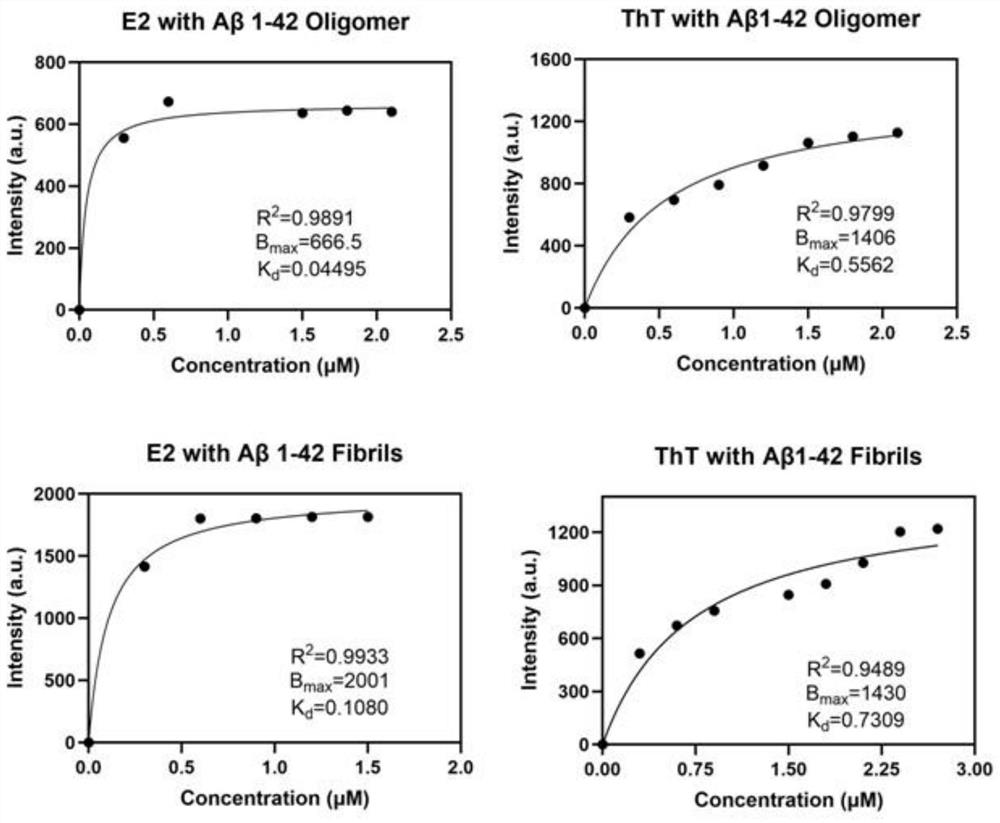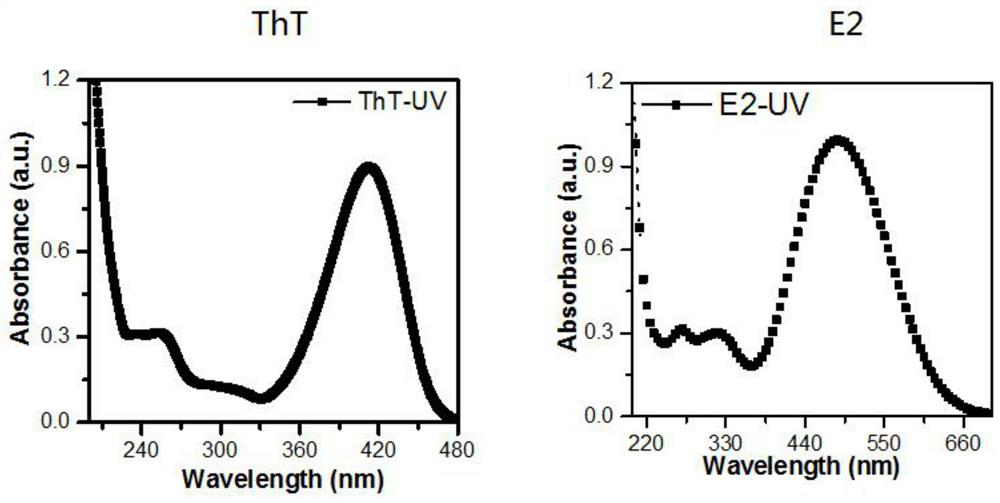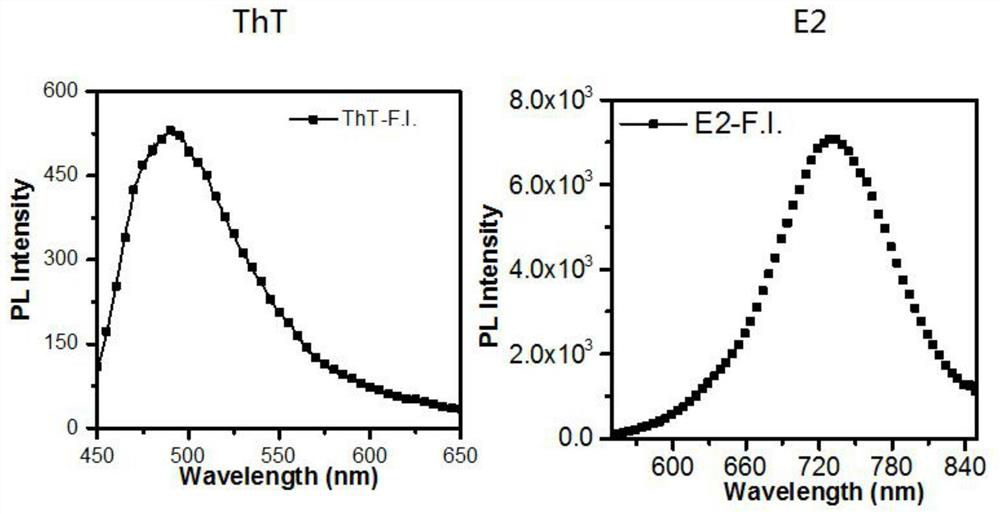Fluorescent probe for detecting amyloid protein aggregate as well as preparation method and application of fluorescent probe
An amyloid and fluorescent probe technology, applied in the field of biomedicine, can solve problems such as limited binding ability, and achieve the effects of improving binding ability, improving optical properties, and reducing background signals
- Summary
- Abstract
- Description
- Claims
- Application Information
AI Technical Summary
Problems solved by technology
Method used
Image
Examples
Embodiment 1
[0033] 4-methyl-pyridine-1,2-dibromoethane and a molar ratio of 2.5: 1 the amount of mixing, with stirring at 100 ℃ Charging hours to give a white solid which was washed with diethyl ether, to give the intermediate 1,2--4 - methylpyridine ethane. 4-methyl-pyridine-1,2-oxide with p-dimethylamino cinnamaldehyde in a molar ratio of 1: 2 was dissolved in an amount of n-butanol was added and the molar amount of piperidine-dimethylamino cinnamaldehyde, etc. as the catalyst, under reflux for 120 ℃ 7 hours, cooled to room Wen Houjing placed in a refrigerator 24h, black powder precipitated solid was suction filtered washed with diethyl ether to give the fluorescent probe.
Embodiment 2
[0035] 4-methyl-pyridine-1,2-dibromoethane and a molar ratio of 2.5: 1 the amount of mixing, with stirring at 100 ℃ Charging hours to give a white solid which was washed with diethyl ether, to give the intermediate 1,2--4 - methylpyridine ethane. 1,2-oxide and 4-methylpyridine-dimethylamino cinnamaldehyde in a molar ratio of: an amount of 2.5 dissolved in n-butanol was added piperidine as a catalyst, piperidine and dimethylamino cinnamic molar ratio of aldehyde to 1: 2, was refluxed at 120 ℃ 8 hours, cooled to room Wen Houjing placed in a refrigerator 24h, black powder precipitated solid was filtered off with suction, washed with diethyl ether to give the fluorescent probe.
Embodiment 3
[0037] 4-methyl-pyridine-1,2-dibromoethane and a molar ratio of 2.5: 1 the amount of mixing, with stirring at 100 ℃ Charging hours to give a white solid which was washed with diethyl ether, to give the intermediate 1,2--4 - methylpyridine ethane. 1,2-oxide and 4-methylpyridine-dimethylamino cinnamaldehyde in a molar ratio of: an amount of 3 was dissolved in n-butanol was added piperidine as a catalyst, piperidine and dimethylamino cinnamic aldehyde molar ratio of 1: 1.5, was refluxed at 120 ℃ 6 hours, cooled to room Wen Houjing placed in a refrigerator 24h, black powder precipitated solid was filtered off with suction, washed with diethyl ether to give the fluorescent probe.
PUM
 Login to View More
Login to View More Abstract
Description
Claims
Application Information
 Login to View More
Login to View More - R&D
- Intellectual Property
- Life Sciences
- Materials
- Tech Scout
- Unparalleled Data Quality
- Higher Quality Content
- 60% Fewer Hallucinations
Browse by: Latest US Patents, China's latest patents, Technical Efficacy Thesaurus, Application Domain, Technology Topic, Popular Technical Reports.
© 2025 PatSnap. All rights reserved.Legal|Privacy policy|Modern Slavery Act Transparency Statement|Sitemap|About US| Contact US: help@patsnap.com



